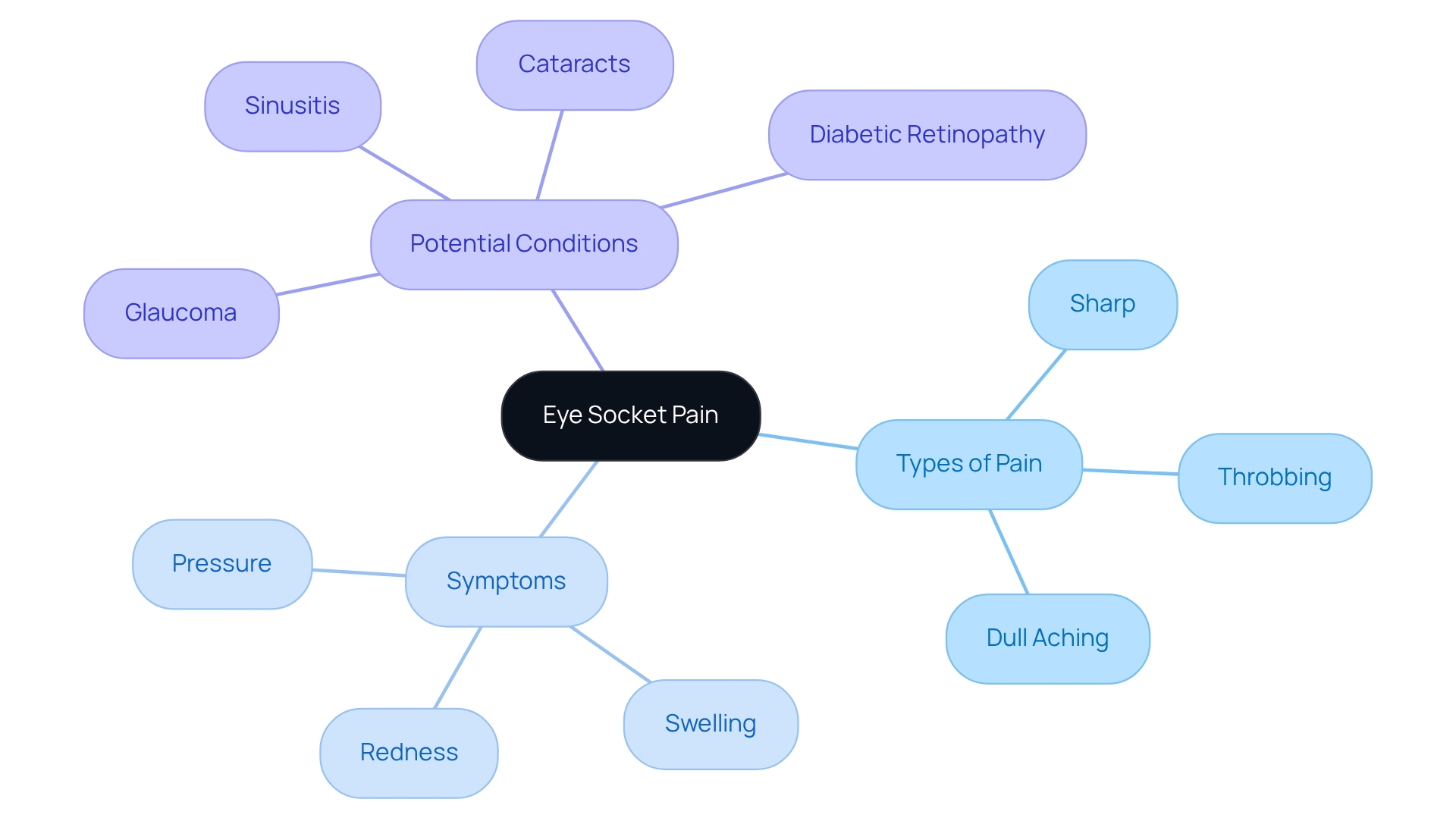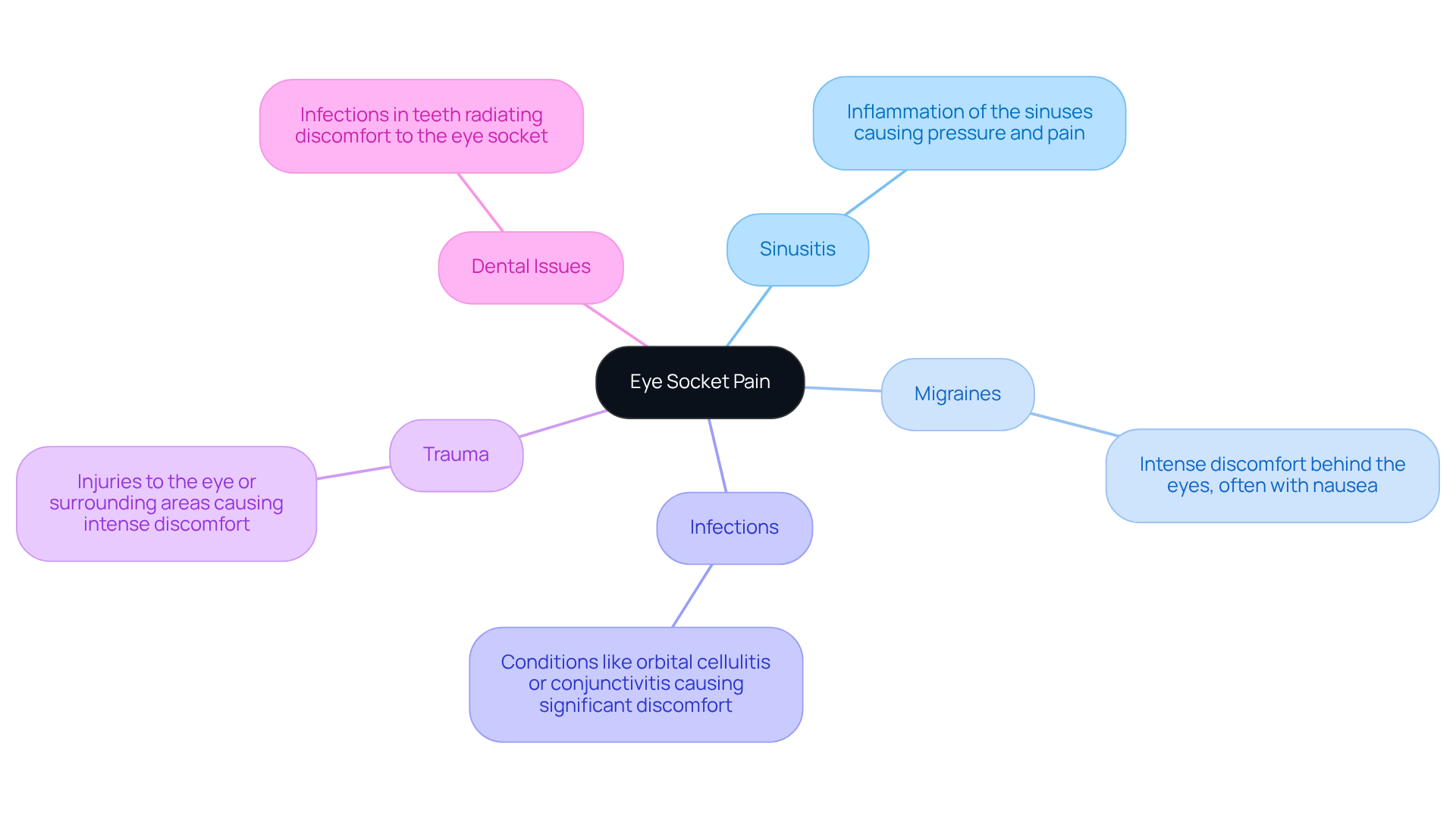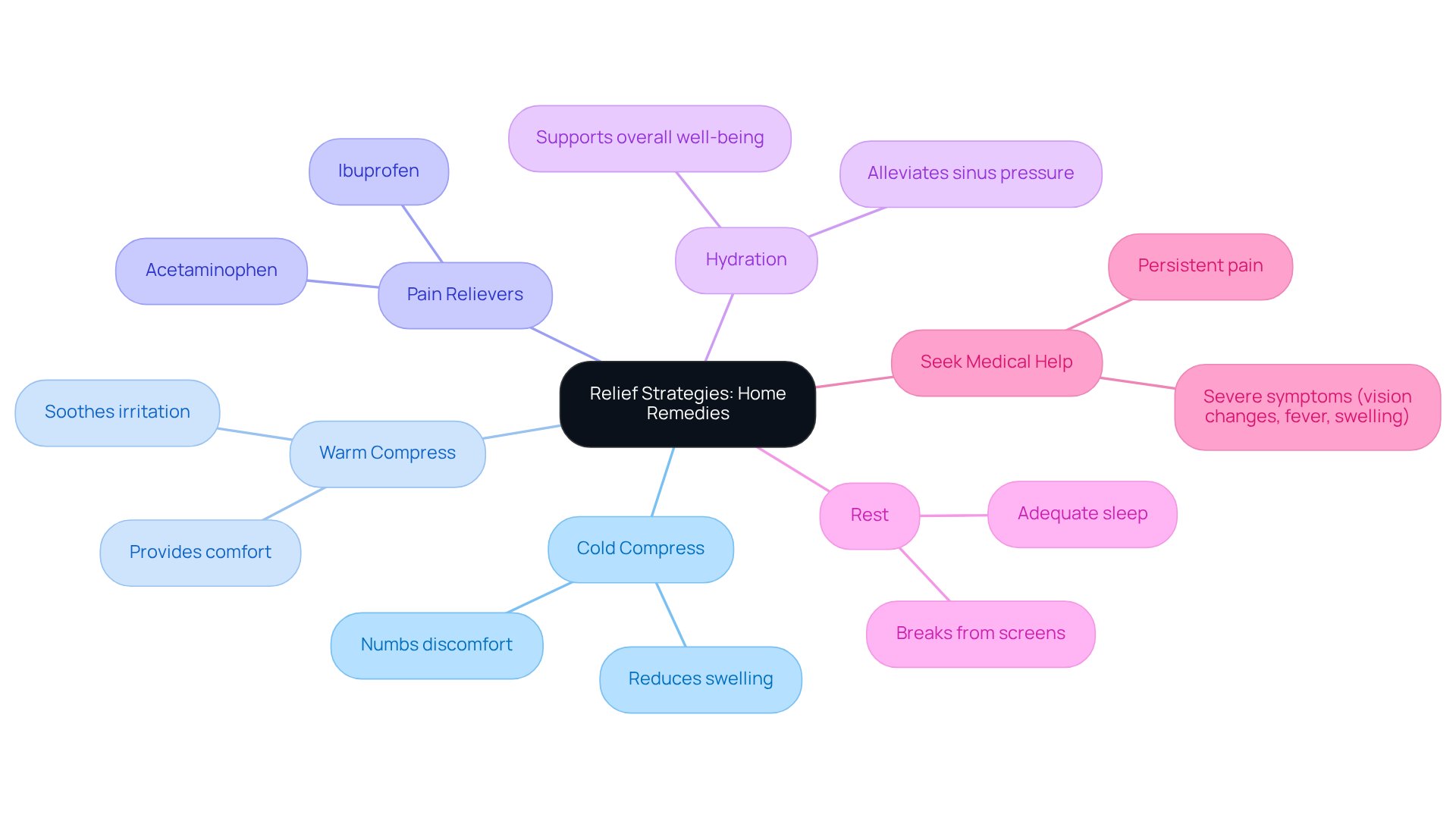Posted by: Northwest Eye in General on October 12, 2025
Overview
Experiencing pain in one eye can be concerning, and it’s important to understand that this discomfort can stem from various causes. Conditions such as:
- sinusitis
- migraines
- infections
- trauma
- dental issues
may lead to this pain, each requiring different treatment approaches. We recognize that these symptoms can be distressing, and we want to reassure you that seeking medical help is crucial. Timely intervention not only helps prevent serious complications but also significantly improves your health outcomes. Remember, you are not alone in this; we are here to help you through this process.
Introduction
Experiencing discomfort in the eye socket, especially when it affects just one eye, can be perplexing and alarming. We understand that this sensation can leave you feeling uncertain and anxious. It’s crucial to recognize the various causes—ranging from sinusitis to migraines—so that you can find clarity and relief from your symptoms. However, with so many potential triggers, how can you tell whether it’s a minor irritation or something more serious?
This article delves into the intricacies of eye socket pain. We aim to provide you with insights into its symptoms, common causes, and effective relief strategies. Our goal is to ensure you feel well-equipped to tackle this often-overlooked health issue. Remember, we are here to help you through this process.
Define Eye Socket Pain: Types and Symptoms
Discomfort in the eye socket can manifest in various forms, such as sharp, throbbing, or dull aching sensations, and can often be described as eye socket pain in one eye. You might also experience eye socket pain in one eye, along with pressure, swelling, and redness.
We understand that these indicators can be concerning, and comprehending them is essential for differentiating between minor discomfort and more serious conditions. For instance, pain accompanied by vision changes, like blurred vision—which can result from conditions such as cataracts or diabetic retinopathy—may indicate a more urgent issue, such as glaucoma or sinusitis.
It’s common to feel overwhelmed by these symptoms, but neglecting them can lead to severe health complications. Therefore, it is crucial to seek professional medical assistance if you encounter these conditions. Identifying these signs promptly can lead to timely medical intervention and improved outcomes for you.

Explore Causes of Eye Socket Pain: Common Conditions and Triggers
There are several conditions that might be causing you concern, including eye socket pain in one eye. We understand that experiencing discomfort in this area can be unsettling. Here are some common triggers:
- Sinusitis: Inflammation of the sinuses can lead to pressure and pain around the eyes, which can feel quite uncomfortable.
- Migraines: Migraines can cause intense discomfort behind the eyes, which may manifest as eye socket pain in one eye, often accompanied by other distressing symptoms like nausea.
- Infections: Conditions such as orbital cellulitis or conjunctivitis can lead to significant discomfort, which may include eye socket pain in one eye, and it’s important to address these promptly.
- Trauma: Trauma, including injuries to the eye or surrounding areas, can cause eye socket pain in one eye, resulting in intense discomfort that can be alarming.
- Dental Issues: Infections in the teeth can sometimes radiate discomfort, resulting in eye socket pain in one eye, adding to your worries.
Understanding these triggers is essential for determining the appropriate course of action and treatment. We are here to help you through this process and ensure you receive the care you need.

Implement Relief Strategies: Home Remedies and When to Seek Medical Help
To alleviate eye socket pain, we understand how distressing this can be, and we encourage you to consider the following strategies:
- Cold Compress: Applying a cold compress to the affected area can help reduce swelling and numb discomfort, offering you some relief.
- Warm Compress: If your discomfort is related to infections, a warm compress may soothe irritation and provide comfort.
- Over-the-Counter Pain Relievers: Medications like ibuprofen or acetaminophen can offer temporary relief, allowing you to feel more at ease.
- Hydration: Staying hydrated is important, as it can alleviate issues related to sinus pressure, supporting your overall well-being.
- Rest: Taking breaks from screens and ensuring you get adequate sleep can help prevent strain, giving your eyes the care they need.
We want to emphasize that if your pain persists, worsens, or is accompanied by severe symptoms such as vision changes, fever, or swelling, it is vital to seek medical attention. Early intervention can prevent complications and ensure you receive the proper treatment. Remember, we are here to help you through this process.

Conclusion
Discomfort in the eye socket, especially when it occurs in one eye, can understandably cause worry for many individuals. It’s important to understand the nature of this pain, its potential causes, and effective relief strategies to address the issue and promote overall eye health.
Throughout this article, we’ve discussed key points regarding the types and symptoms of eye socket pain, including sharp, throbbing, or dull sensations. Common causes such as sinusitis, migraines, infections, trauma, and dental issues have been highlighted, emphasizing the significance of recognizing these triggers. Additionally, practical relief strategies—like using cold and warm compresses, over-the-counter pain relievers, staying hydrated, and ensuring plenty of rest—have been provided to help manage discomfort effectively.
Ultimately, we must remain vigilant about eye socket pain and not dismiss any alarming symptoms. It’s common to feel uncertain, but seeking professional medical assistance when experiencing persistent or severe symptoms can lead to timely intervention and better health outcomes. By being informed and proactive, we can take charge of our eye health and ensure that any underlying issues are addressed promptly. Remember, we are here to help you through this process.
Frequently Asked Questions
What is eye socket pain?
Eye socket pain refers to discomfort in the eye socket that can present as sharp, throbbing, or dull aching sensations, often occurring in one eye.
What are the common symptoms associated with eye socket pain?
Common symptoms include pressure, swelling, and redness in the eye socket, along with the pain itself.
When should I be concerned about eye socket pain?
You should be concerned if eye socket pain is accompanied by vision changes, such as blurred vision, as this may indicate more serious conditions like glaucoma or sinusitis.
Why is it important to address eye socket pain promptly?
Promptly addressing eye socket pain is crucial because neglecting these symptoms can lead to severe health complications. Seeking medical assistance can lead to timely intervention and better health outcomes.






